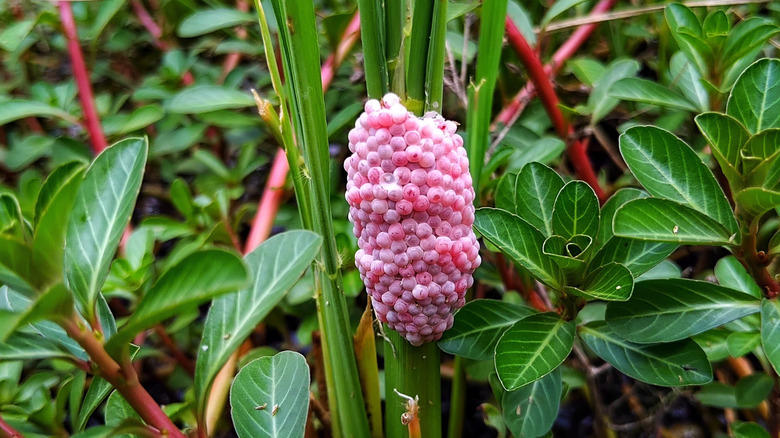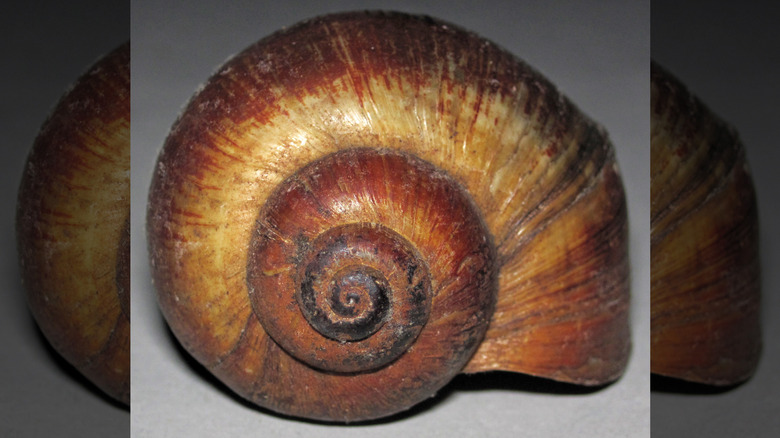You Should Always Destroy The Eggs Of One Animal Species. Here's Why
A lot of plants and animals on the endangered list are there because of invasive species, at least in part. One of those culprits is the apple snail, of which there are multiple species under the genus Pomacea. While the Florida apple snail (Pomacea paludosa) is native to that region, its cousins are some of the worst invasive species in Florida. These species are native to South America but have spread to other states, including Louisiana, Texas, North Carolina, California, and even Hawaii, because pet owners irresponsibly dump their aquariums outdoors. Alongside the danger that apple snails pose to animals found in freshwater ecosystems, these mollusks pose a threat to humans.
The risk that apple snails pose to people is rat lungworm (Angiostrongylus cantonesis), for which they're an intermediate host. This means that if people consume raw or undercooked snails — or even produce — that are contaminated with the parasitic larvae, they are likely to experience a mild illness. Severe cases, however, can lead to chronic nerve damage, eosinophilic meningitis (a rare type of meningitis), or death. Since female apple snails can lay clusters of 500 to 700 eggs every 5 to 14 days, it's important to destroy those eggs when you see them to hinder their reproduction and reduce their impact on the environment and human health.
How to identify and destroy apple snail eggs
Identifying apple snail eggs starts with knowing what the mature snails look like, feed on, and live in. You can distinguish them by their heavy shells, which will be golden yellow to dark brown in color and have dark bands. While most apple snails are 2 to 4 inches tall, some can be as tall as 6 inches, making them some of the biggest freshwater snails. What these snails need to live are a variety of aquatic algae, fruits, and vegetables for food, as well as other snail eggs and rotting organisms. The apple snails prefer a habitat where the water has a low salinity, moves slowly, and is well oxygenated, so this is where you're likely to find their eggs, too.
While apple snails live under the water for most of their lives, they emerge when they mature at 2 to 6 months old to lay their eggs above the waterline. The eggs can be found on nearly any hard surface, such as tree trunks and tall grasses. Generally, the eggs are laid in clusters several inches long, containing 20 to 2,000 spheres about the size of a pinhead or slightly larger. Florida apple snail eggs quickly turn from a pale salmon pink to white, while other exotic species' eggs can be bubble-gum colored and turn gray or white before they hatch.
To destroy these clusters, you can use a stick to brush them off of the hard surface and into the water. It's important to avoid touching the eggs because they contain a neurotoxin called perivitellin-2, which can cause eye and skin irritation.

